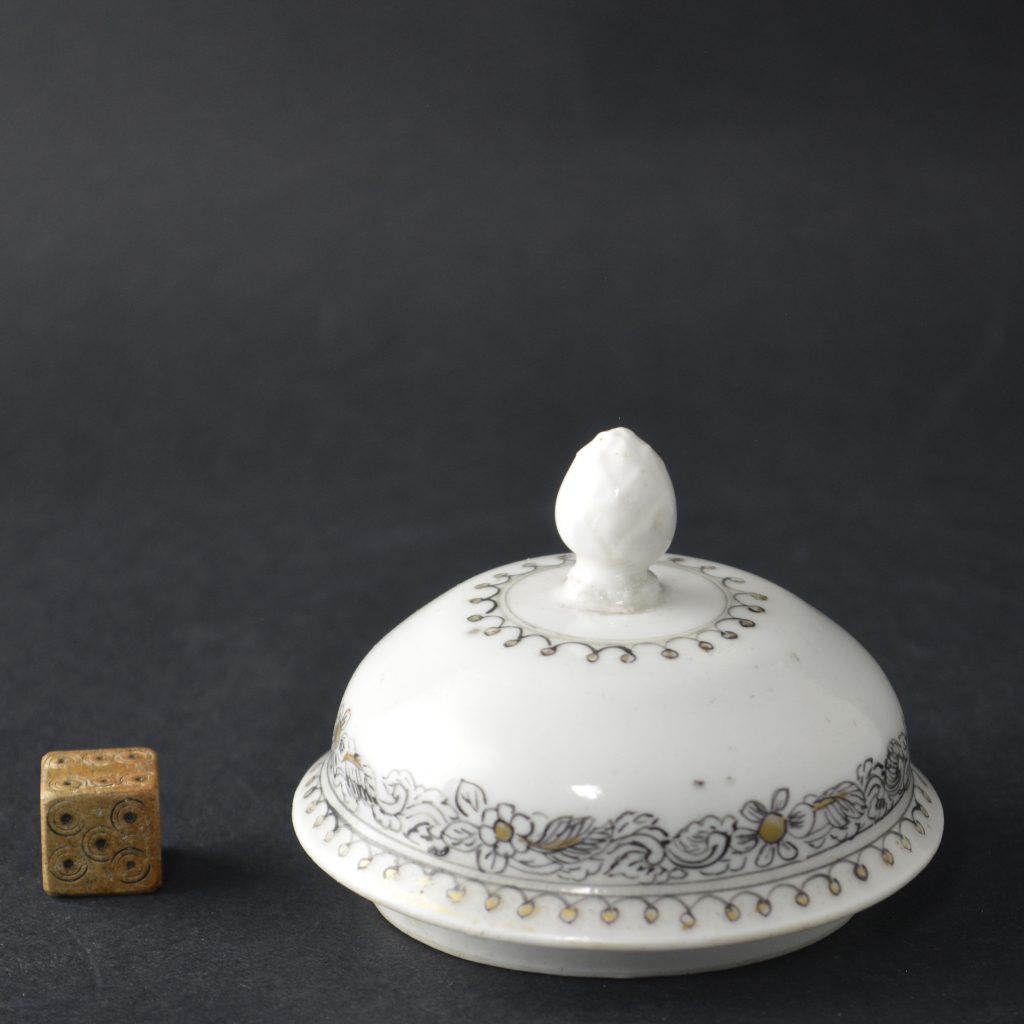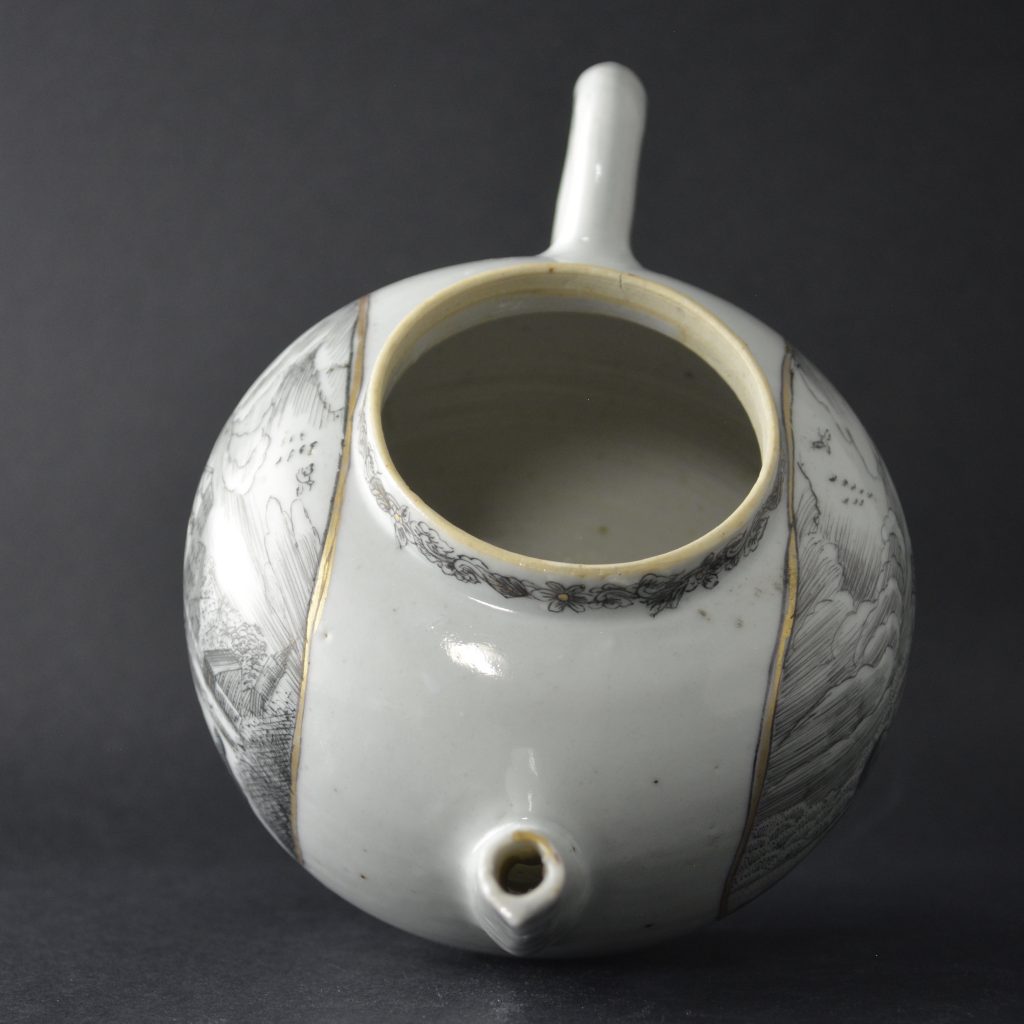
An 18th Century Dutch Decorated Chinese Export Porcelain Teapot
An 18th Century Dutch Decorated Chinese Export Porcelain Teapot with an 18th Century European (probably Dutch) replacement porcelain cover. The decoration found on this teapot relates to a relatively small group of Chinese Export Porcelain teawares decorated in Holland between about 1750 and 1760. They are not overdecorated, the plain white Chinese porcelain must have been ordered specially for enameling in Holland. The subject matter is of Dutch rustic landscapes with buildings and is contained within gilded bracketed borders. The decoration is always very well executed and appears to be by the same hand, the painting is confident and free flowing, and quite unlike En Grisaille porcelain imported from China. Superficially the decoration gives the appearance of being copied from engravings, however on closer inspection the free drawing of the lines appears closer to what one would expect to see on an etching. The minimum use of cross-hatching, the use curved lines, dots and dashes are also closer to etching than engraving.
SALE PENDING
- Condition
- In good condition, the end of the spout has rubbing to the gilded line. The cover is an 18th Century European (probably Dutch) replacement porcelain cover.
- Size
- Diameter 17.5 cm (7 inches)
- Provenance
- N/A
- Stock number
- 25283
Information
Dutch Decorated En Grisaille Landscapes :
This decoration is found on a small group of Chinese Export Porcelain teawares decorated in Holland between about 1750 and 1760. They are not overdecorated, the plain white Chinese porcelain must have been ordered specially for enameling in Holland. The subject matter is of Dutch rustic landscapes with buildings and is contained within gilded bracketed borders. The decoration is always very well executed and appears to be by the same hand, the painting is confident and free flowing, and quite unlike En Grisaille porcelain imported from China. Superficially the decoration gives the appearance of being copied from engravings, however on closer inspection the free drawing of the lines appears closer to what one would expect to see on an etching. The minimum use of cross-hatching, the use curved lines, dots and dashes are also closer to etching than engraving. For a part tea service with this type of Dutch decoration see : European Scenes on Chinese Art (Introduction by Teresa Canepa, Jorge Welsh Books, 2005. ISBN 0-9550992-1-8) page 157-158.











